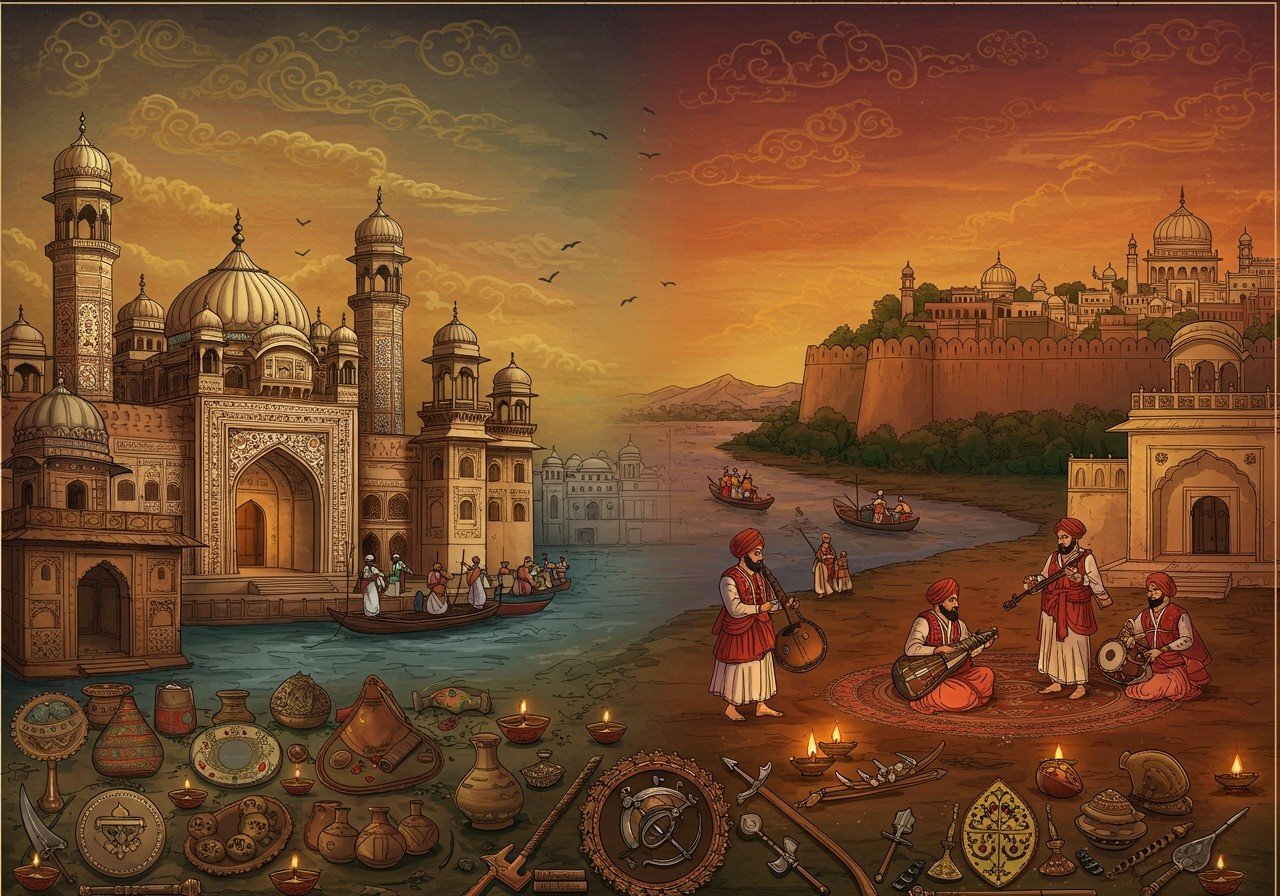
Faridkot and Gurdaspur, nestled in the heart of Punjab, India, boast rich histories and vibrant cultural significance. This exploration delves into their unique historical narratives, cultural heritage, and notable landmarks. By understanding their past, we can appreciate their present and envision their future.
History of Faridkot, Punjab
Founding and Early History
Faridkot’s history traces back to the Indus Valley Civilization, with links to sites explored in the Rupnagar District. The town was founded in the 13th century by Raja Mokalsi and named after the revered Sufi saint Baba Farid. The state of Faridkot itself wasn’t established until the 18th century by Raja Mokul Singh, gaining prominence under the rule of Raja Hamir Singh.
Faridkot Fort
Faridkot Fort stands as a symbol of the city’s historical battles and architectural prowess. It gained prominence during the reign of Raja Hamir Singh and played a significant role in regional politics and the Sikh Empire.
Cultural Festivals and Traditions
Faridkot is known for vibrant cultural festivals such as the Baba Sheikh Farid Aagman Purab, a celebration of the Sufi saint’s legacy. These events showcase the city’s rich heritage and strong community spirit, bringing people together in vibrant displays of tradition.
Impact of British Rule and Post-Independence Modernization
British colonial rule significantly impacted Faridkot’s development, leading to administrative restructuring and infrastructure development. Post-independence, Faridkot continued to modernize with improved transportation, education, and other essential facilities shaping its current landscape.
Notable Personalities
Faridkot has been home to numerous notable personalities, including influential political leaders and celebrated artists, who have contributed significantly to its rich cultural and historical tapestry.
History of Gurdaspur, Punjab
Ancient Roots and Mughal Era Significance
Gurdaspur, situated in the Majha region of Punjab, has equally fascinating historical roots. Ancient texts and archaeological findings reference its early existence. The district is known for the Beas and Ravi rivers that flow through its landscape. During the Mughal era, Gurdaspur held strategic importance, notably as the location where the Mughal emperor Akbar was reportedly enthroned in a garden, highlighting its historical significance. It borders Pakistan’s Narowal District as well as several other Indian districts.
Role in the Sikh Empire and Impact of Partition
Gurdaspur played a significant role during Maharaja Ranjit Singh’s reign in the Sikh Empire. Its location near the Beas and Ravi rivers made it a vital area for trade and defense. The Partition of India in 1947 had a profound effect on Gurdaspur due to its proximity to the newly established border, leading to significant demographic shifts and economic challenges.
Contributions to Independence Movement and Modern Developments
Gurdaspur actively contributed to the Indian independence movement, with local leaders and freedom fighters playing a crucial role. Post-independence, Gurdaspur has experienced economic and infrastructural growth, driven by investments in agriculture and industry.
Cultural Festivals and Traditions
Gurdaspur is known for its rich cultural festivals, including Lohri and Baisakhi, which showcase the region’s vibrant heritage and agricultural traditions. These celebrations bring communities together, reinforcing social bonds and cultural identity.
Comparison of Historical Contexts
Founding Myths and Figures, Regional Politics, and Architectural Styles
Faridkot and Gurdaspur have distinct founding myths and figures associated with their origins. Faridkot’s connection to Baba Farid and Gurdaspur’s link to Akbar’s enthronement highlight their diverse historical trajectories. Regional politics have also impacted each city’s development differently, with Faridkot’s involvement in the Sikh Empire and Gurdaspur’s role during Mughal rule shaping their respective political landscapes. Their architectural styles further differentiate them, with Faridkot’s forts and Gurdaspur’s gardens reflecting their unique historical influences.
Impact of British Rule and Partition
While both cities experienced the impact of British rule, the nature of this impact varied. Faridkot underwent significant administrative changes, while Gurdaspur faced dramatic demographic shifts due to the Partition. These historical events have shaped their modern development in distinct ways.
Cultural Heritage and Traditions
Festivals, Arts and Crafts, Cuisine, and Religious Sites
Both cities boast unique festivals that showcase their rich traditions. Faridkot’s Baba Sheikh Farid Aagman Purab honors the Sufi saint, while Gurdaspur’s Lohri celebrates the harvest season. Traditional crafts, arts, and music are integral to their cultural identities. Faridkot’s folk music reflects its Sufi heritage, while Gurdaspur’s crafts highlight its agricultural roots. Local cuisine plays a significant role in reflecting their cultural richness, with dishes incorporating ingredients tied to their agricultural practices and riverine geography. Religious sites, including Gurdwaras and temples, hold deep significance in community life, such as Faridkot’s Gurudwara Tilla Baba Farid and Gurdaspur’s Qila Mubarak.
Notable Landmarks and Attractions
Faridkot Fort stands as a testament to historical battles and architectural prowess. Gurdaspur’s Qila Mubarak offers a glimpse into its Mughal-era significance. The Beas and Ravi rivers contribute to Gurdaspur’s scenic beauty, providing opportunities for tourism and recreation.
Impact of Historical Events on Modern Development
The legacy of colonial rule and the effects of the Partition have shaped the modern development of both cities. Post-independence modernization efforts have transformed them, with improvements in transportation, agriculture, and industry playing key roles in their progress.
How Poojn.in Supports Your Spiritual Journey
Poojn.in, India’s leading online store for cultural and religious goods, provides a wide selection of products to support your spiritual practices. Whether you need items for Durga Puja, Mata worship, Saraswati Puja, or other religious ceremonies, you can find authentic and high-quality products on our website. We offer convenient delivery to Faridkot, Gurdaspur, and surrounding areas, ensuring you have access to the necessary items for your spiritual journey.
Explore our collection of Laddu Gopal statues, incense sticks, and other puja essentials at poojn.in.
Conclusion
Faridkot and Gurdaspur, each with its unique historical narrative, cultural heritage, and notable landmarks, offer a captivating glimpse into Punjab’s rich past. Understanding their history allows us to appreciate their present and contribute to their future.


